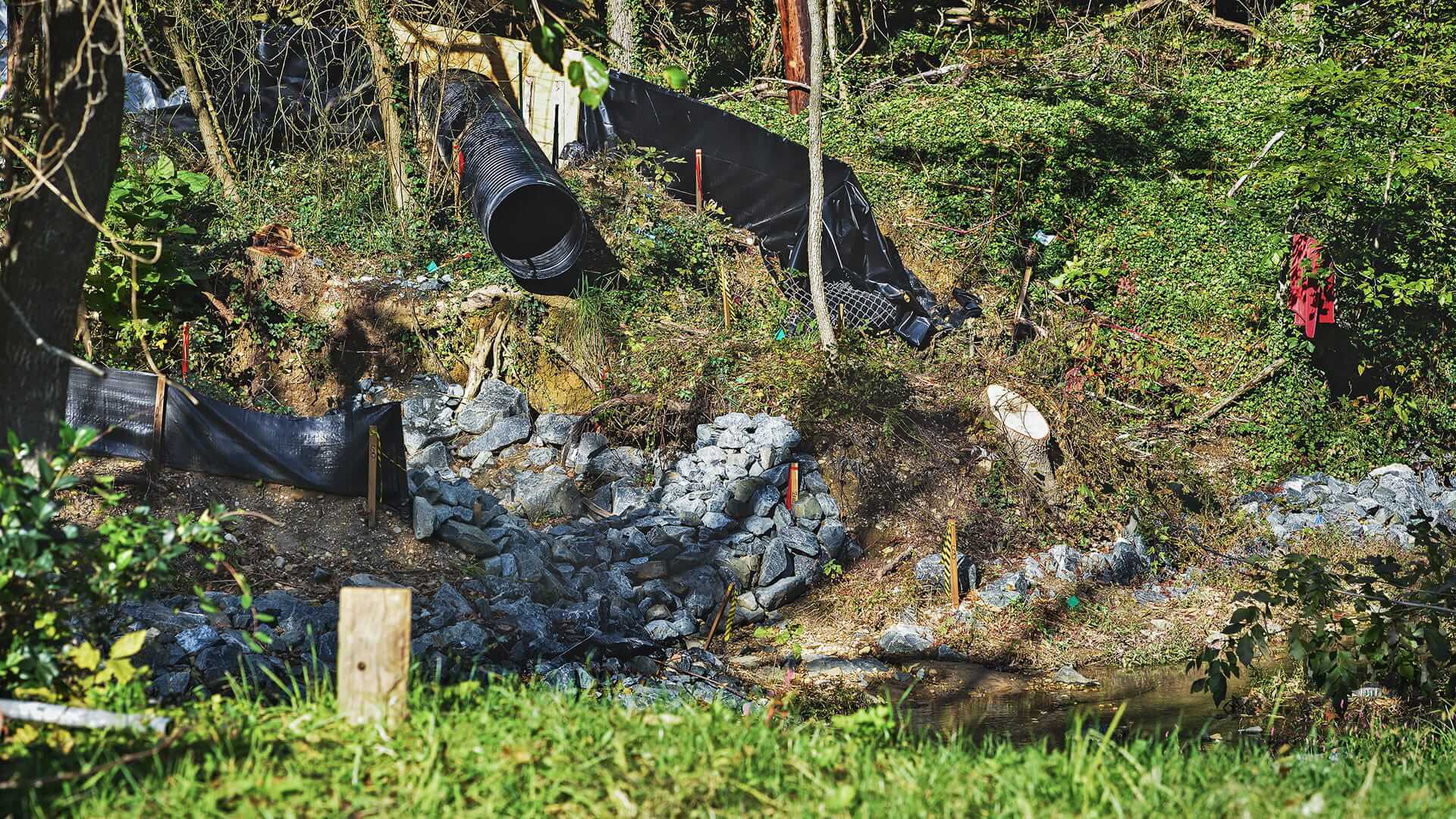- November 02, 2018
- By Anjanette Riley
When a rainstorm hits, phosphorus from fertilizers, pet droppings and yard waste can flow into area waterways and later reach the Chesapeake Bay, leading to oxygen-starved “dead zones.”
A new stormwater basin being installed in Suitland, Md., harnesses technology developed at the A. James Clark School of Engineering to contain this nutrient pollution, protecting aquatic life and the livelihoods of Marylanders who depend on the Chesapeake.
The bioretention basin is the first of six slated for construction across Prince George’s County by the Clean Water Partnership—a first-of-its-kind collaboration between the county and the private-sector company Corvias—the Low Impact Development Center and the University of Maryland.
When construction of the first basin wraps up in mid-November, stormwater will flow into it at the end of Davis Avenue. As the water seeps through a bed of stones lining an artificial pond and into the ground, it will pass through a 12-inch layer of an aluminum-based material known for its ability to bind with and trap phosphorus.
“The media we’ll be using is actually a waste product typically discarded by drinking water treatment plants,” said Allen P. Davis, the Charles A. Irish Sr. Chair in Civil Engineering. “Reusing aluminum-based residuals allows us to improve water quality while also reducing waste.”
The water, now reduced in nutrient pollution, finally enters a drainage pipe that empties into a nearby creek.
Davis has been researching the use of aluminum-based water treatment residuals in stormwater management for 10 years; the first installation to use the media was built on the College Park campus in 2011.
Over the next approximately 18 months, Davis and civil and environmental engineering graduate student Blake Wang will track rainfall and compare concentrations of phosphorus in water entering and leaving the Suitland basin.
They’ll share final results with state environmental authorities for possible use in other counties. If successful, the new technology could be added to the list of practices allowed under a Maryland Department of the Environment stormwater permit.
The six bioretention basins — also in Adelphi, Upper Marlboro, Bowie, Temple Hills and Hyattsville — will be built with about $600,000 awarded earlier this year by the National Fish and Wildlife Foundation.
“Stormwater pollution is a local problem with significant downstream implications, which is why it’s so important that organizations like these work together to approach the issue in innovative ways,” said Peter Littleton, Corvias senior operations manager and CWP team member.
